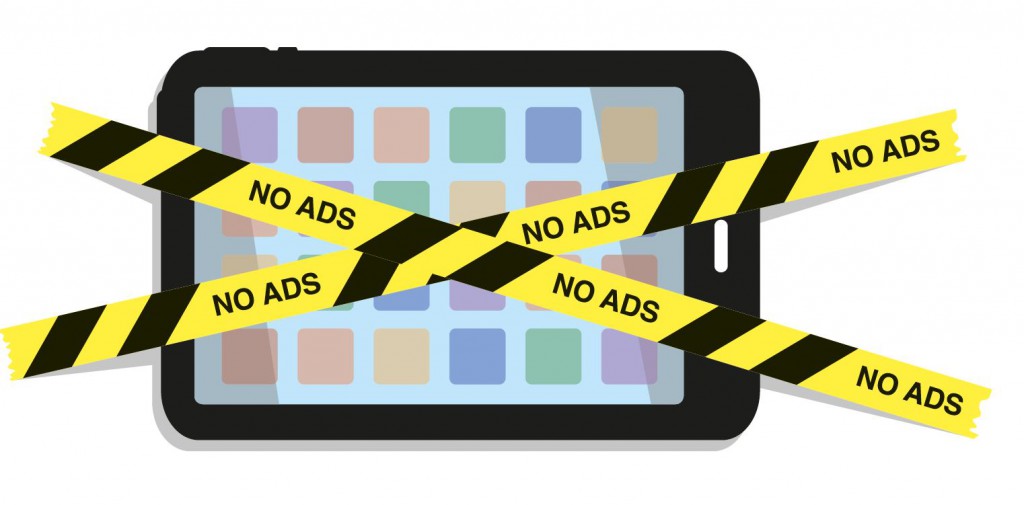The rise of ad blocking has gripped the media industry in the past 12 months, with fierce debate over whether it will have a positive influence or herald the death of advertising. Anna Dobbie reports.
“It’s like I’m in a black void trying to reach a news story, but then the next thing I know, I’m reading an ad for Geiko.” Those were the words of an annoyed cartoon character on hit Comedy Central series South Park, in a recently aired episode called ‘Sponsored Content’.
Although the show, which has maintained its cult following by tackling current affairs from a humorously extreme perspective, lampoons the situation with references to popular movies such as Blade Runner, Terminator and Ex Machina, the take home message for advertisers is that internet ads are seen as the enemy.
In response to this sentiment, the past year has witnessed the rise of ad blockers, leading to fierce debate as to whether or not they will turn out to have a positive influence.
Adblock Plus started as a project in a developer’s bedroom in 2006. “What Wladimir Palant, my colleague, did when he developed Adblock Plus was make it easy for non-developers to use – and as soon as he did that, it shot to the top of the Mozilla store,” says Eyeo head of operations Ben Williams on the project’s success.
However, Williams concedes that the idea was coined when “no one cared about the publishers”.
“Honestly, I’m not going to give [the developers] too much blame for this – who would have had the foresight that something like this would have, according to some estimates, 200 million users worldwide?” he says.
Williams feels that ad blocking is in line with other internet developments, like those happening to the music industry, dubbing this period “the rise of the user”. “When the users get that inherent control, they don’t give it back – they hold on to it,” he adds.
Adblock Plus orchestrated a meeting with leading publishers, tech companies, advertisers and academics in New York City called Camp David, to form an ‘Acceptable Ads’ committee – with another planned in London in January 2016.
“I tend to think that larger brands would not be so pleased to fi nd out that their latest campaign was annoying users,” says Williams, stressing that the challenge lies in making better adverts. “If you want to do anything on your site, it’s your site.”
Blocking the ad blockers
Some publishers are taking on ad blockers at their own game, by preventing users from seeing any content if they activate the software.
Axel Springer was the first publisher to implement this method on its Bild.de tabloid website, with users given the option to either deactivate their ad blocker or purchase a special subscription called BILDsmart.
“It’s worked very well so far,” says Axel Springer spokesman Manuel Adolphsen, going on to say that ad blocking has been reduced from around 23% by two thirds since implementation. “We can market and sell to more advertisers because visitors who have their ad blocker activated are not marketable,” he adds.
The UK was hot on Axel Springer’s heels, with ad-funded freesheet City A.M. introducing a similar policy in October for Firefox desktops, and going on to roll it out across other browsers in December.
“We need our audience to accept that they have to see ads in order to view content”
“From our perspective, it’s a relatively straightforward thing,” says digital and social media director Martin Ashplant. “We need our audience to accept that they have to see ads in order to view content because otherwise we are putting our own business model in danger. Nineteen per cent of our desktop page impressions had an ad blocker on, and desktop is where we make the vast majority of our revenue. When it gets to a point where a fifth of our page impressions are not able to have any monetisation at all, that’s a concern for us.”
Ashplant feels that, although Apple’s recent move to allow ad blocks on iOS9 mobile devices remains “a very small thing” in the context of the wider industry, that may well change.
The Firefox test case worked well, with marginal impact on overall bounce or exit rate.
“I take this to mean that people who were a passing visitor and didn’t have a particular relationship with City A.M., they were only going to come here for one page which they saw on Twitter or Google and were then likely to leave anyway – they are the ones who are less inclined to turn their ad blocker off, which you’d accept,” says Ashplant.
“The people who have an association with City A.M. or feel there is real value in the content are the people who are turning it off and, interestingly, are going on to consume more pages than average by quite some degree. So people who have made the call that, actually, there is a value exchange here, and they are prepared to see ads to do so, are engaging with City A.M. content in quite a high manner.”
Data and transparency
SourcePoint founder and chief executive officer Ben Barokas believes that publishers blocking ad-blocker users are leading the way.
“Until there is mass adoption of locking the content down in the face of ad blocking, it will continue to grow exponentially,” Barokas says.
“It’s shocking that it’s been around for seven or eight years and just now people are waking up to the destruction. It’s going to wreak havoc on the ecosystem, so that’s probably the highlight and the lowlight. Sometimes it’s wonderful but also frustrating, kind of like life,” he adds.
“At the brand level, they expect the agencies to take care of it. At the agency level, they expect the publishers to take care of it. At the publisher level, they’re getting blackmailed and kind of running scared but are afraid to provide friction into the value exchange.”
Barokas feels that data and transparency are key to understanding ad blocking, with the acceptance of a value exchange at the heart of the issue.
“It can’t be voluntary,” he says. “Consumers can either pay with currency or they can pay with their attention, but users have to pay one way or another for content. Until it gets very, very annoying to white-list on every premium publisher site that you go to, people will continue to download ad blockers because there are actually no downsides, it’s actually a huge positive for a user to have an ad blocker.”
“Consumers can either pay with currency or they can pay with their attention, but users have to pay one way or another for content”
IPG Mediabrands Map G14 chief executive officer Jason Carter, meanwhile, can see both sides of the argument. “For the ‘me’ that works in the ad industry, ad blockers are a concern. However, if you speak to the consumer ‘me’, I understand the beef,” he says.
“A lot of, though not all, publishers are guilty of giving their visitors a raw deal. This lot are giving publishers and advertisers a bad name and sadly the more ethical publishers get penalised along with the miscreants. Given how quick and easy ad blockers are to get hold of, I’m surprised more people don’t use them,” Carter adds.
“The problem is that if everyone did it, the web would be a poorer place. Advertising remains one of the primary funding models for digital content and therefore it actually does a lot of good. Publishers need to clean up their act and give people less reason to turn off ads in the fi rst place.”
Carter has misgivings about the reasoning behind rumours that Google is paying ad blockers to whitelist its Ad Sense product, describing it as “more protection racket than a long-term solution”.
Equally, he notes that Apple’s ad blocking doesn’t stretch to apps, which could push more publishers towards using apps, thus actually protecting the company’s revenue.
“The pessimistic ‘me’ is concerned that the big players like Apple and Facebook will drive publishers into their closed ecosystems,” he says. “The big boys have greater ability to control the terms on which people access their services, and this is not in the public’s interest.
“One thing for sure is that ad blockers aren’t going away,” he concludes. “The cat is out of the bag and publishers and advertisers need to live alongside this development.”
 This is the one thing that all sides seem to agree on. To quote South Park once more, “There’s a war coming”, and advertisers need to make sure they are on the right side.
This is the one thing that all sides seem to agree on. To quote South Park once more, “There’s a war coming”, and advertisers need to make sure they are on the right side.









